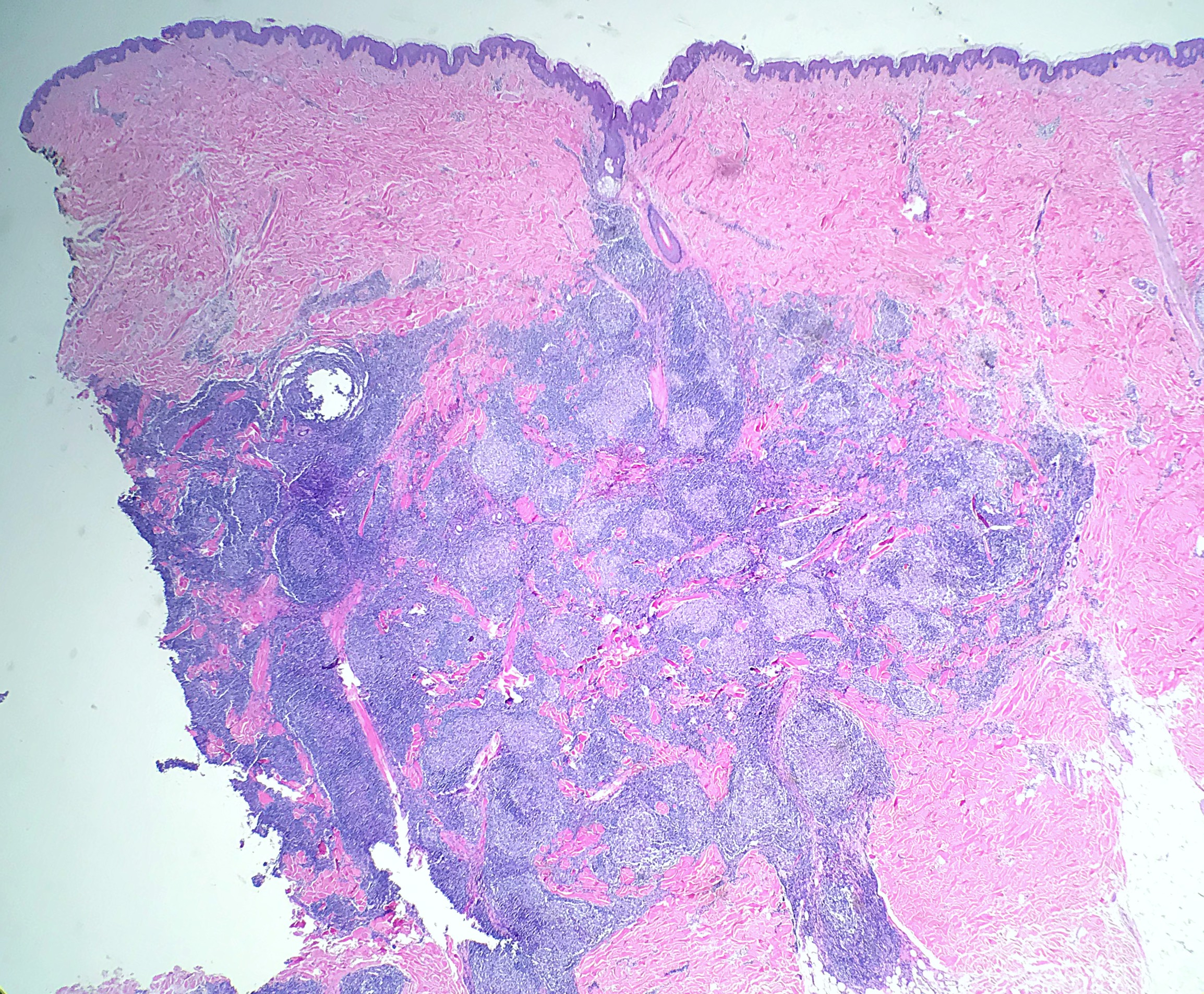[1]
Willemze R,Jaffe ES,Burg G,Cerroni L,Berti E,Swerdlow SH,Ralfkiaer E,Chimenti S,Diaz-Perez JL,Duncan LM,Grange F,Harris NL,Kempf W,Kerl H,Kurrer M,Knobler R,Pimpinelli N,Sander C,Santucci M,Sterry W,Vermeer MH,Wechsler J,Whittaker S,Meijer CJ, WHO-EORTC classification for cutaneous lymphomas. Blood. 2005 May 15;
[PubMed PMID: 15692063]
[3]
Willemze R,Cerroni L,Kempf W,Berti E,Facchetti F,Swerdlow SH,Jaffe ES, The 2018 update of the WHO-EORTC classification for primary cutaneous lymphomas. Blood. 2019 Apr 18;
[PubMed PMID: 30635287]
[4]
Bradford PT,Devesa SS,Anderson WF,Toro JR, Cutaneous lymphoma incidence patterns in the United States: a population-based study of 3884 cases. Blood. 2009 May 21;
[PubMed PMID: 19279331]
Level 3 (low-level) evidence
[5]
Swerdlow SH,Quintanilla-Martinez L,Willemze R,Kinney MC, Cutaneous B-cell lymphoproliferative disorders: report of the 2011 Society for Hematopathology/European Association for Haematopathology workshop. American journal of clinical pathology. 2013 Apr;
[PubMed PMID: 23525619]
[6]
Zinzani PL,Quaglino P,Pimpinelli N,Berti E,Baliva G,Rupoli S,Martelli M,Alaibac M,Borroni G,Chimenti S,Alterini R,Alinari L,Fierro MT,Cappello N,Pileri A,Soligo D,Paulli M,Pileri S,Santucci M,Bernengo MG, Prognostic factors in primary cutaneous B-cell lymphoma: the Italian Study Group for Cutaneous Lymphomas. Journal of clinical oncology : official journal of the American Society of Clinical Oncology. 2006 Mar 20;
[PubMed PMID: 16492713]
[8]
Bekkenk MW,Vermeer MH,Geerts ML,Noordijk EM,Heule F,van Voorst Vader PC,van Vloten WA,Meijer CJ,Willemze R, Treatment of multifocal primary cutaneous B-cell lymphoma: a clinical follow-up study of 29 patients. Journal of clinical oncology : official journal of the American Society of Clinical Oncology. 1999 Aug;
[PubMed PMID: 10561311]
[9]
Suárez AL,Pulitzer M,Horwitz S,Moskowitz A,Querfeld C,Myskowski PL, Primary cutaneous B-cell lymphomas: part I. Clinical features, diagnosis, and classification. Journal of the American Academy of Dermatology. 2013 Sep;
[PubMed PMID: 23957984]
[10]
Cerroni L,Arzberger E,Pütz B,Höfler G,Metze D,Sander CA,Rose C,Wolf P,Rütten A,McNiff JM,Kerl H, Primary cutaneous follicle center cell lymphoma with follicular growth pattern. Blood. 2000 Jun 15;
[PubMed PMID: 10845929]
[11]
Szablewski V,Ingen-Housz-Oro S,Baia M,Delfau-Larue MH,Copie-Bergman C,Ortonne N, Primary Cutaneous Follicle Center Lymphomas Expressing BCL2 Protein Frequently Harbor BCL2 Gene Break and May Present 1p36 Deletion: A Study of 20 Cases. The American journal of surgical pathology. 2016 Jan;
[PubMed PMID: 26658664]
Level 3 (low-level) evidence
[12]
Senff NJ,Noordijk EM,Kim YH,Bagot M,Berti E,Cerroni L,Dummer R,Duvic M,Hoppe RT,Pimpinelli N,Rosen ST,Vermeer MH,Whittaker S,Willemze R, European Organization for Research and Treatment of Cancer and International Society for Cutaneous Lymphoma consensus recommendations for the management of cutaneous B-cell lymphomas. Blood. 2008 Sep 1;
[PubMed PMID: 18567836]
Level 3 (low-level) evidence
[13]
Goyal A,LeBlanc RE,Carter JB, Cutaneous B-Cell Lymphoma. Hematology/oncology clinics of North America. 2019 Feb;
[PubMed PMID: 30497672]
[14]
Specht L,Dabaja B,Illidge T,Wilson LD,Hoppe RT, Modern radiation therapy for primary cutaneous lymphomas: field and dose guidelines from the International Lymphoma Radiation Oncology Group. International journal of radiation oncology, biology, physics. 2015 May 1;
[PubMed PMID: 25863751]

